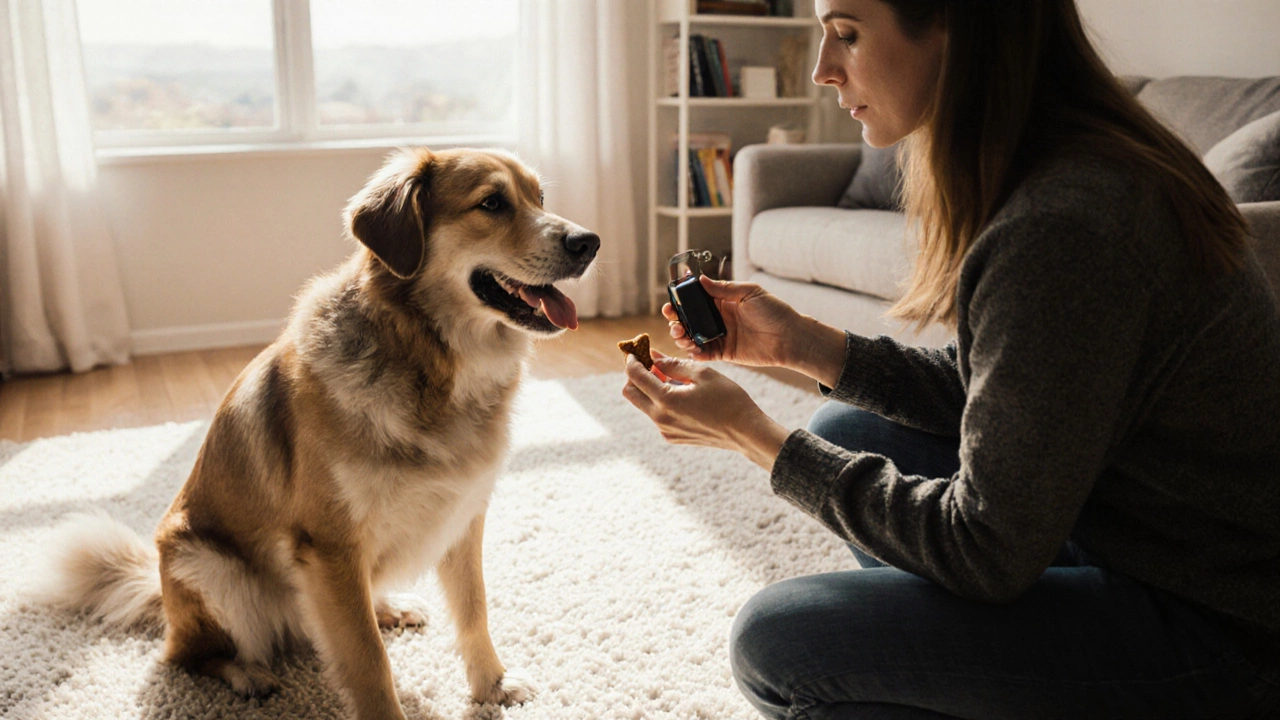Puppy Obedience Made Simple: What Every New Owner Needs
Got a new pup and wondering how to get them to sit, stay, and come when called? You’re not alone. Most owners think obedience is a giant puzzle, but it’s just a series of tiny habits you build each day. Below are the core moves that turn a curious puppy into a reliable companion.
Start with One Command at a Time
Pick the command you need most – usually "sit" – and practice it for five minutes, three times a day. Use a treat your puppy loves, say the word, then gently push their hindquarters down. The moment they sit, give the treat and a happy "good job!" Keep the tone upbeat; puppies respond to excitement more than a stern voice.
Once "sit" sticks, add a second command like "stay". Ask for "sit", then hold your hand out palm‑facing and say "stay". Take one step back, then immediately return and reward. If they move, reset and try a shorter distance. Gradually increase the space and time before the treat.
Use Consistent Cues and Short Sessions
Dogs learn by repetition, not marathon training. Ten‑minute bursts keep their attention sharp and prevent boredom. Use the exact same word and hand signal each time – mixing "sit down" with "sit" confuses them. Write the cues on a sticky note if needed; consistency beats creativity.
Practice in different spots – kitchen, garden, living room – so your pup learns the command everywhere, not just where you first taught it. A quick five‑minute refresher before a walk can reinforce the skill before distractions appear.
When you’re out in public, keep treats handy but switch to praise or a quick game once the behavior is solid. Over‑rewarding can make the pup expect a snack every time, which isn’t practical for long walks or visits.
Common mistakes to dodge: yelling when they mess up, switching to a new command before the first is mastered, and using food that’s too unhealthy. A calm voice, clear cue, and healthy treats keep training fun and effective.
Remember, puppies are learning to read your body as much as your words. Keep eye contact, stay relaxed, and finish each session on a high note. A short, successful round leaves them eager for the next one.
Finally, celebrate tiny wins. A shaky "stay" for two seconds is still progress. Keep a training log – jot down the date, command, and success level. Seeing the pattern helps you spot when to push harder or when to give a break.
With these straightforward steps, you’ll build a solid obedience foundation without feeling overwhelmed. Your puppy will start to respond reliably, making walks, vet trips, and couch cuddles smoother for both of you.
Posted By Bryndle Redding On 23 Oct 2025 Comments (0)
DIY Dog Training: Step‑by‑Step Guide to Train Your Dog at Home
Learn how to train your dog yourself with a step‑by‑step DIY guide, covering tools, positive reinforcement, common challenges, and a handy checklist for lasting results.
READ MOREPosted By Bryndle Redding On 5 Apr 2025 Comments (0)
When Do Puppies Start Listening and Obeying?
Getting a puppy to obey commands isn't just about age; it's about knowing when they start developing the ability to focus and understand. Learn how puppies grow and when you can expect them to start listening to you. Find out what toys can aid in training and make the process enjoyable for both you and your furry friend.
READ MORE
